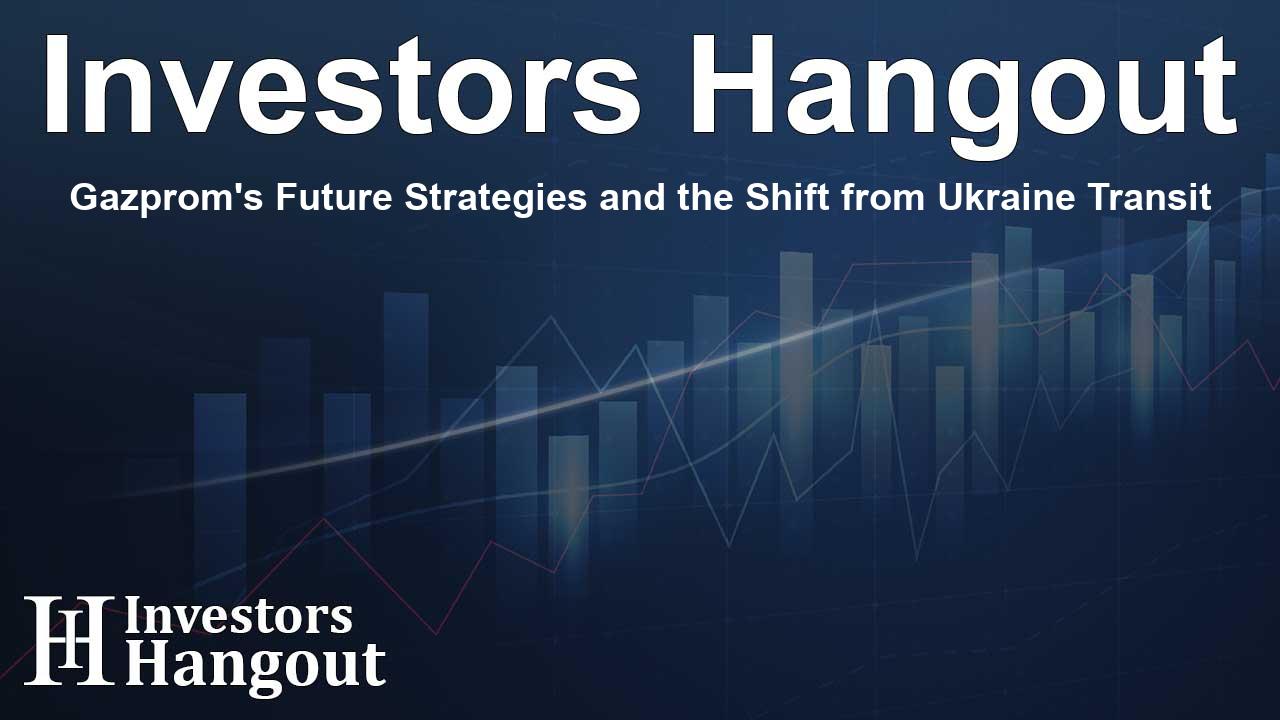Gazprom's Future Strategies and the Shift from Ukraine Transit

Gazprom's Strategic Outlook for 2025
The Russian energy giant Gazprom is adapting to new realities in the global gas market. Internal sources indicate that Gazprom's planning for 2025 anticipates an end to gas transit via Ukraine, marking a significant shift in energy flow dynamics to Europe.
End of an Era for Ukrainian Transit
Ukraine has expressed its intention to terminate the long-standing transit agreement that has facilitated gas flows from Siberia to central Europe for over fifty years. This deal has been a vital source of revenue for the Russian budget, establishing an intricate web of energy dependence that dates back to Soviet times.
The Stakes for Ukraine
While Ukraine aims to conclude this prominent transit deal—which generates substantial transit fees for the country—Moscow has shown a willingness to negotiate. Russian President Vladimir Putin has indicated that the country may still continue gas transit through Ukraine if an agreement can be reached.
Current Russian Gas Market Dynamics
With the ramifications of the Ukraine crisis, Russia has witnessed a dramatic reduction in its European customer base. Prior to the conflict, it was the primary supplier of natural gas to Europe; however, the changing landscape has forced the nation to reconsider its export strategies.
Export Projections and Implications
Gazprom expects a significant dip in gas exports to Europe, estimating a fall to just under 39 billion cubic metres in 2025, down from more than 49 billion cubic metres in the current year. This decline is primarily attributed to the anticipated cessation of the Ukrainian transit route.
Alternate Supply Routes and Future Prospects
Despite the forecasted cuts to European gas exports, Gazprom's sales to Turkey through the TurkStream and Blue Stream pipelines are projected to remain steady. Furthermore, exports to China are on the rise, destined to reach approximately 38 billion cubic metres next year, signaling a pivot in focus away from Europe.
The Unraveling of Historic Energy Ties
The establishment of an extensive energy network connecting Russia with Europe has spanned decades, rooted in the discovery of Siberian gas deposits. However, geopolitical tensions and infrastructural damages have threatened to dissolve long-standing energy partnerships, ultimately reshaping the market landscape.
The Decreasing Role of Ukraine
Current exports through Ukraine are remarkably modest compared to previous peaks. In 2023, gas shipments totalled around 15 billion cubic metres, a stark contrast to the high volumes witnessed in 2018–2019.
Impacts on Russian Energy Strategy
With only 8% of Russian gas flowing via Ukrainian routes, Gazprom's energy strategy is increasingly reliant on forging new paths and partnerships. The historic Urengoy-Pomary-Uzhgorod pipeline, which routed gas through Ukraine to Slovakia, has seen diminished usage as the energy landscape continues to evolve.
Looking Ahead: European Dependency on U.S. Gas
The cutback in Russian gas exports has prompted Europe to seek alternative sources, notably increasing dependency on U.S. gas. As EU gas consumption decreased to approximately 295 billion cubic metres in 2023, this shifted landscape poses new challenges and opportunities for energy suppliers.
Frequently Asked Questions
What is Gazprom's plan for gas transit through Ukraine?
Gazprom plans to cease gas transit via Ukraine beginning in 2025, anticipating a significant reduction in exports to Europe.
Why does Ukraine want to end the gas transit deal?
Ukraine aims to terminate the deal to gain more control over its energy resources and reduce reliance on Russian gas.
How will Gazprom's exports change in the future?
Gazprom expects exports to the European market to fall significantly, while exports to Turkey and China are anticipated to remain stable or increase.
What has influenced the reduction in Russian gas supplies to Europe?
The reduction is influenced by geopolitical tensions, changes in market demand, and the destruction of transportation infrastructure.
What are the historical ties between Russian gas and Europe?
The history of Russian gas supplies to Europe dates back to Soviet times, maintaining vital energy connections that have recently come under strain.
About Investors Hangout
Investors Hangout is a leading online stock forum for financial discussion and learning, offering a wide range of free tools and resources. It draws in traders of all levels, who exchange market knowledge, investigate trading tactics, and keep an eye on industry developments in real time. Featuring financial articles, stock message boards, quotes, charts, company profiles, and live news updates. Through cooperative learning and a wealth of informational resources, it helps users from novices creating their first portfolios to experts honing their techniques. Join Investors Hangout today: https://investorshangout.com/
Disclaimer: The content of this article is solely for general informational purposes only; it does not represent legal, financial, or investment advice. Investors Hangout does not offer financial advice; the author is not a licensed financial advisor. Consult a qualified advisor before making any financial or investment decisions based on this article. The author's interpretation of publicly available data shapes the opinions presented here; as a result, they should not be taken as advice to purchase, sell, or hold any securities mentioned or any other investments. The author does not guarantee the accuracy, completeness, or timeliness of any material, providing it "as is." Information and market conditions may change; past performance is not indicative of future outcomes. If any of the material offered here is inaccurate, please contact us for corrections.